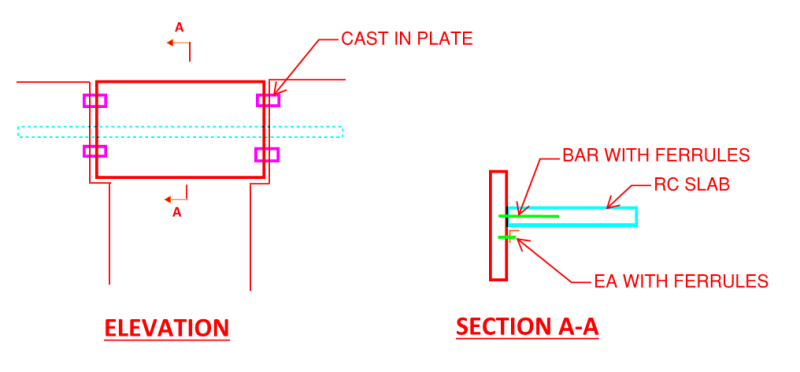UpsideDown
Structural
- Oct 5, 2019
- 32
As shown below, Do I need to consider the moment induced by the eccentric loads from RC slab and thus check the pull out capacity of cast-in plate for panel-overhead panel? Or can I assume the load will be central loaded by the use of EA plus ferrules? I have reviewed comps by others but haven't seen consideration being given to this.



